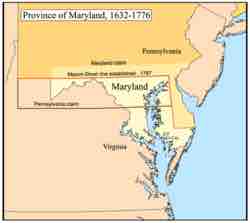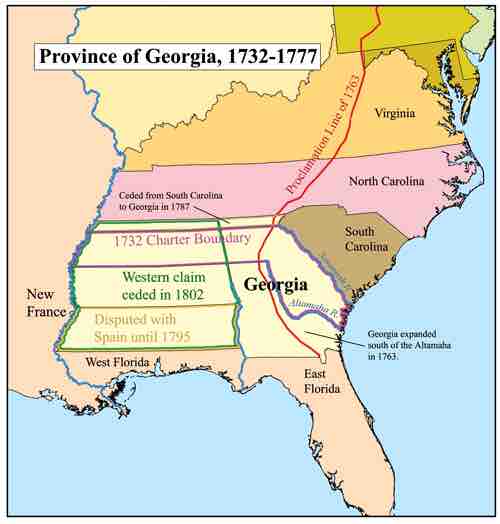Background
The Southern Colonies in North America were established by the British during the 16th and 17th centuries. At the time, they consisted of South Carolina, North Carolina, Maryland, Virginia, and Georgia; their historical names were the Colony and Dominion of Virginia, the Province of Carolina, and the Province of Georgia.
Prior to colonization, the American Indian tribes of the Algonquin, Siouan, and Iroquoian linguistic groups inhabited the Chesapeake Bay area. Several of the Algonquian tribes were associated with the politically powerful Powhatan Confederacy. The colonies were originally chartered to compete in the race for colonies in the 15th, 16th, and 17th centuries. They then developed into prosperous colonies that made large profits based on cash crops such as tobacco, indigo dye, and rice. Over time, the region quickly became well known for its high slave population and highly unequal social class distribution.
Major Developments for Southern Colonies
Maryland
George Calvert received a charter from King Charles I to found the colony of Maryland in 1634. The province began as a proprietary colony of the English Lord Baltimore, who wished to create a haven for Roman Catholics in the New World at the time of the European wars of religion. Although it was intended as a refuge for Catholics, a significant part of the population was Protestant, and Protestants later gained control of the colony during the English civil wars.

Maryland
A map of the Province of Maryland.
The Carolinas
The next major development in the history of the Southern Colonies was the Province of Carolina, originally chartered in 1629. The first permanent English settlement was established in 1653 when emigrants from the Virginia Colony, New England, and Bermuda settled on the shores of Albemarle Sound in the northeastern corner of present-day North Carolina. Due to their remoteness from each other, the northern and southern sections of the colony operated more or less independently until 1691, when a governor of the entire province was appointed.
Virginia
The Colony of Virginia existed briefly during the 16th century and then continuously from 1607 until the American Revolution. The name "Virginia" was first applied by Sir Walter Raleigh and Queen Elizabeth I in 1584, when Raleigh established a colony on the island of Roanoke off the coast of Virginia. It is the oldest designation for English claims in North America. Charles I eventually granted proprietary charters to the Plymouth Company and the London Company. The cities of Baltimore in Maryland and Richmond in Virginia served as major seaports for the colonies in their trade with Europe, Africa, and the Caribbean.

Virginia
A map of the Colony of Virginia.
Georgia
The Province of Georgia (also called the Georgia Colony) was the last of the 13 original colonies established by Great Britain. In the original grant, a narrow strip of the province extended to the Mississippi River. The 1732 charter created Georgia as a buffer state to protect the prosperous South Carolina from Spanish Florida, and required that debtors be shipped to free space in English jails.

Georgia
A map of the Province of Georgia, 1732–1777.